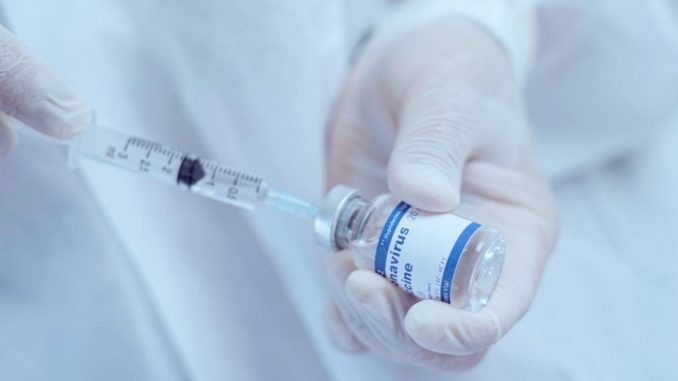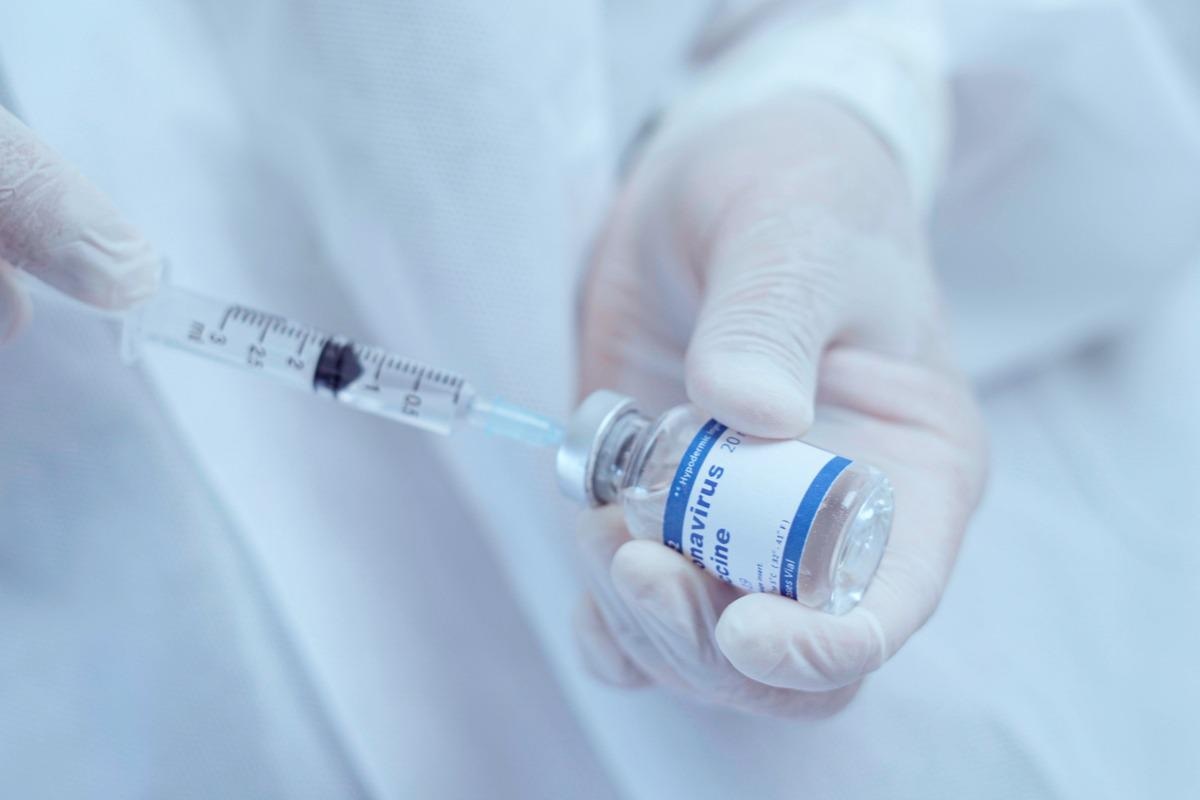
Coronavirus disease 2019 (COVID-19) vaccination platforms have been generated unprecedentedly. Live-attenuated severe acute respiratory syndrome coronavirus 2 (SARS-CoV-2) vaccines have not been extensively researched, despite their advantages such as low cost, high immunogenicity, and long immune durability.
 Study: A live-attenuated SARS-CoV-2 vaccine candidate with accessory protein deletions. Image Credit: Pixza Studio/Shutterstock
Study: A live-attenuated SARS-CoV-2 vaccine candidate with accessory protein deletions. Image Credit: Pixza Studio/Shutterstock
The nucleocapsid of the SARS-CoV-2 virion comprises of genomic RNA coated with nucleocapsid (N) proteins, while the external envelope is a cell-derived bilipid membrane embedded with spike (S), membrane (M), and envelope (E) proteins. The plus-sense, single-stranded viral RNA genome encodes a replicase (open reading frame (ORF)1a/ORF1b), S, E, M, and N structural proteins, as well as seven additional ORFs for accessory proteins. Earlier research on other coronaviruses suggested that the accessory proteins are not required for viral replication and can be deleted to attenuate SARS-CoV-2.
For SARS-CoV-2, reverse genetic systems such as (i) an infectious cDNA clone, (ii) a transient replicon (a self-replicating viral RNA with one or more genes deleted), and (iii) a trans-complementation system (replicon RNAs in cells that express the missing genes in the replicon, allowing for single-cycle replication without spread) have been developed.
The infectious cDNA clone requires biosafety level-3 (BSL-3) containment, while the transient replicon requires RNA preparation and cell line transfections. The trans-complementation system produces virions that can infect naïve cells, albeit for only a single round. Compared with the infectious cDNA clone, both the replicon and trans-complementation system have the advantage of allowing experiments to be performed at biosafety level-2 (BSL-2).
A study posted to the bioRxiv* preprint server provided a new system that incorporated the strengths of the current three systems, in which several rounds of viral infection of naive cells can be accomplished at BSL2. The research showed a highly attenuated SARS-CoV-2 strain (with deleted accessory proteins and rewired transcriptional regulator sequences) that might be used as a live-attenuated vaccine platform and a BSL-2 experimental system.
The study
The team constructed two mutant viruses with accessory ORF deletions, one with ORF 6, 7, and 8 deletions (Δ 678) and another with ORF 3, 6, 7, and 8 deletions (Δ3678). In a hamster model, 3678 SARS-CoV-2 was characterized as a potential live-attenuated vaccine. Researchers intranasally injected K18 human angiotensin-converting enzyme 2 (hACE2) mice with 4, 40, 400, 4,000, or 40,000 PFU of WT or Δ3678 virus to further describe the attenuation. The weight loss, survival rates, and disease indicators of the infected groups were compared.
The team examined the genetic stability of Δ3678 as a live-attenuated vaccine by continuously culturing the virus for five rounds on Vero-E6 cells. Three independent, parallel passaging experiments were performed to assess the consistency of adaptive mutations.
The researchers developed a panel of mutant viruses in the backbone of a mouse-adapted SARS-CoV-2 (MA-SARS-CoV-2) that can infect BALB/c mice to determine the role of each ORF in attenuating the Δ3678 virus. The mutant virus had a specific accessory gene deletion, which might be Δ3a, Δ3b, Δ6, Δ7a, Δ7b, or Δ8. The biological significance of each deleted gene was assessed using viral replication in the lungs following intranasal infection of BALB/c mice.
Researchers studied the mechanism of Δ3a-mediated viral attenuation by infecting human lung A549 cells expressing the human ACE2 receptor (A549-hACE2) with 3a or WT MA-SARS-CoV-2. The virus Δ 3678 was also tested for neutralization and antiviral efficacy.
The findings
The results showed that deletions of ORFs 6, 7, and 8 marginally attenuated SARS-CoV-2 in cell culture. However, an ORF3 deletion to the 678 virus significantly increased the attenuation of Δ3678 virus. When infecting immune-competent cells, the Δ3678 virus is markedly more attenuated than when infecting interferon-deficient cells, evidenced by the 7,500-fold reduction in viral replication than WT virus on human primary HAE cells
The Δ3678 virus to titers >5.6×106 PFU/ml on interferon-incompetent Vero-E6 cells, allowing for large-scale production in this vaccine manufacturer-approved cell line.
The Δ3678 infection did not trigger extreme weight loss or death in both hamster and K18-hACE2 mouse models at the highest tested infection dose of 106 PFU for hamsters and 4×104 PFU for K18-hACE2 mice, whereas the WT virus caused weight loss and death at a much lower infection dose of >4×102 PFU for K18-hACE2 mice.
The results showed that amongst individual ORF-deletion viruses, ORF3a was identified as a significant accessory protein responsible for the Δ3678 virus attenuation. SARS-CoV-2 became more vulnerable to type-I interferon suppression after ORF3a was deleted.
Notably, the attenuated Δ3678 virus may be used for a veterinarian vaccine as SARS-CoV-2 also infect a wide variety of animal species. The team also developed a mNeonGreen reporter Δ3678 virus for high-throughput neutralization and antiviral testing.
Taken together, the results suggest that Δ3678 SARS-CoV-2 may serve as a live-attenuated vaccine candidate and a research tool for potential biosafety level-2 use.
*Important notice
bioRxiv publishes preliminary scientific reports that are not peer-reviewed and, therefore, should not be regarded as conclusive, guide clinical practice/health-related behavior, or treated as established information.
-
Liu, Y. et al. (2022) "A live-attenuated SARS-CoV-2 vaccine candidate with accessory protein deletions". bioRxiv. doi: 10.1101/2022.02.14.480460. https://www.biorxiv.org/content/10.1101/2022.02.14.480460v1
Posted in: Medical Science News | Medical Research News | Disease/Infection News
Tags: ACE2, Angiotensin, Angiotensin-Converting Enzyme 2, Cell, Cell Culture, Cell Line, Coronavirus, Coronavirus Disease COVID-19, covid-19, Efficacy, Enzyme, Gene, Genes, Genetic, Genome, Genomic, Interferon, Lungs, Membrane, Protein, Receptor, Research, Respiratory, RNA, SARS, SARS-CoV-2, Severe Acute Respiratory, Severe Acute Respiratory Syndrome, Syndrome, Vaccine, Virus, Weight Loss

Written by
Snehal Jamalpure
Snehal Jamalpure is a postgraduate student in Microbial gene technology. Following completion of an M.Sc, she worked as a project fellow at the Council of Scientific and Industrial Research-Centre for Cellular and Molecular Biology in Hyderabad, India. Snehal has hands-on experience in protein-related and DNA-related experiments, cell culture, and handling of pathogenic strains ( Leishmania donovani ) in Biosafety level 3 facilities. Snehal is currently pursuing a Ph.D. in the subject of nanobioscience and is working at the interface of nanotechnology and biology.
Source: Read Full Article